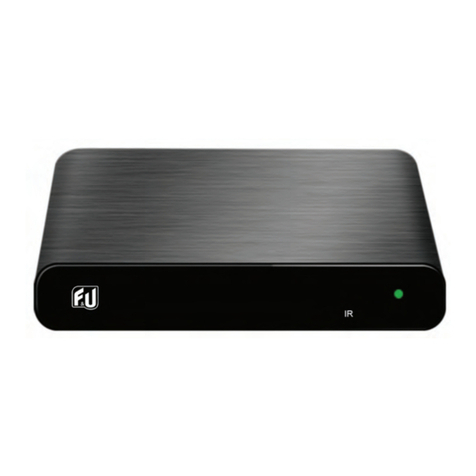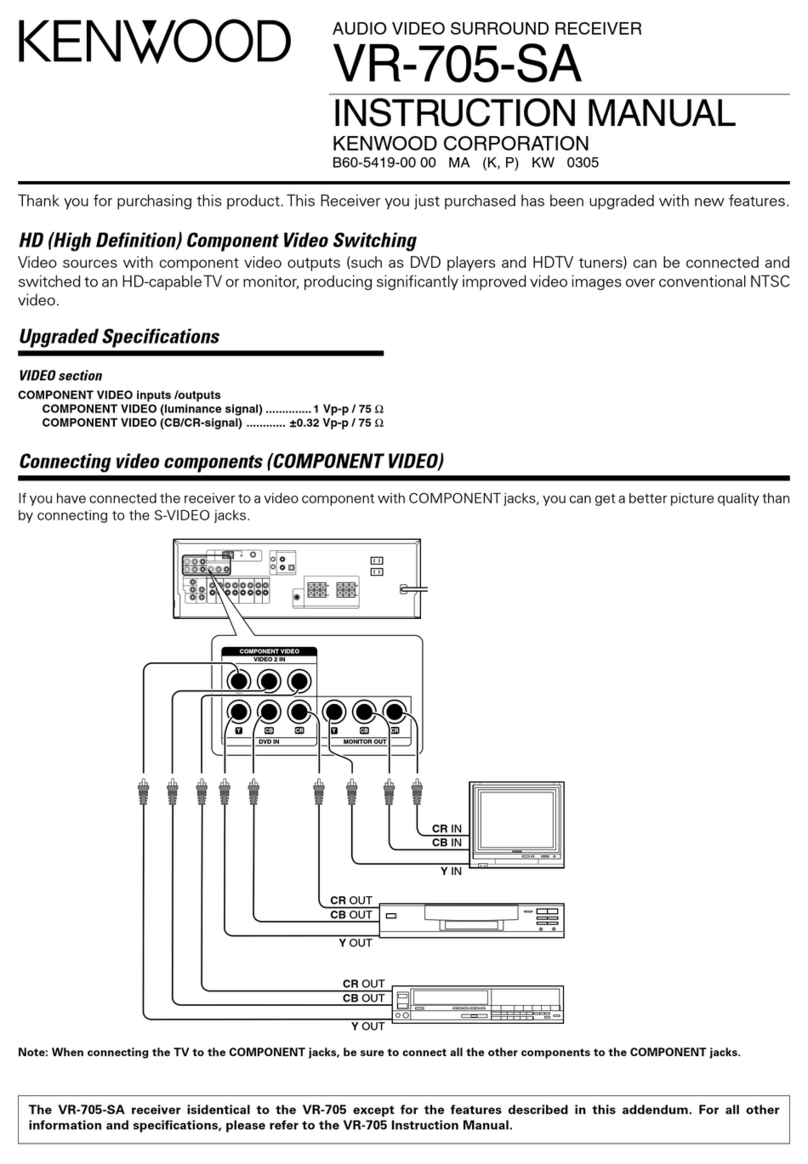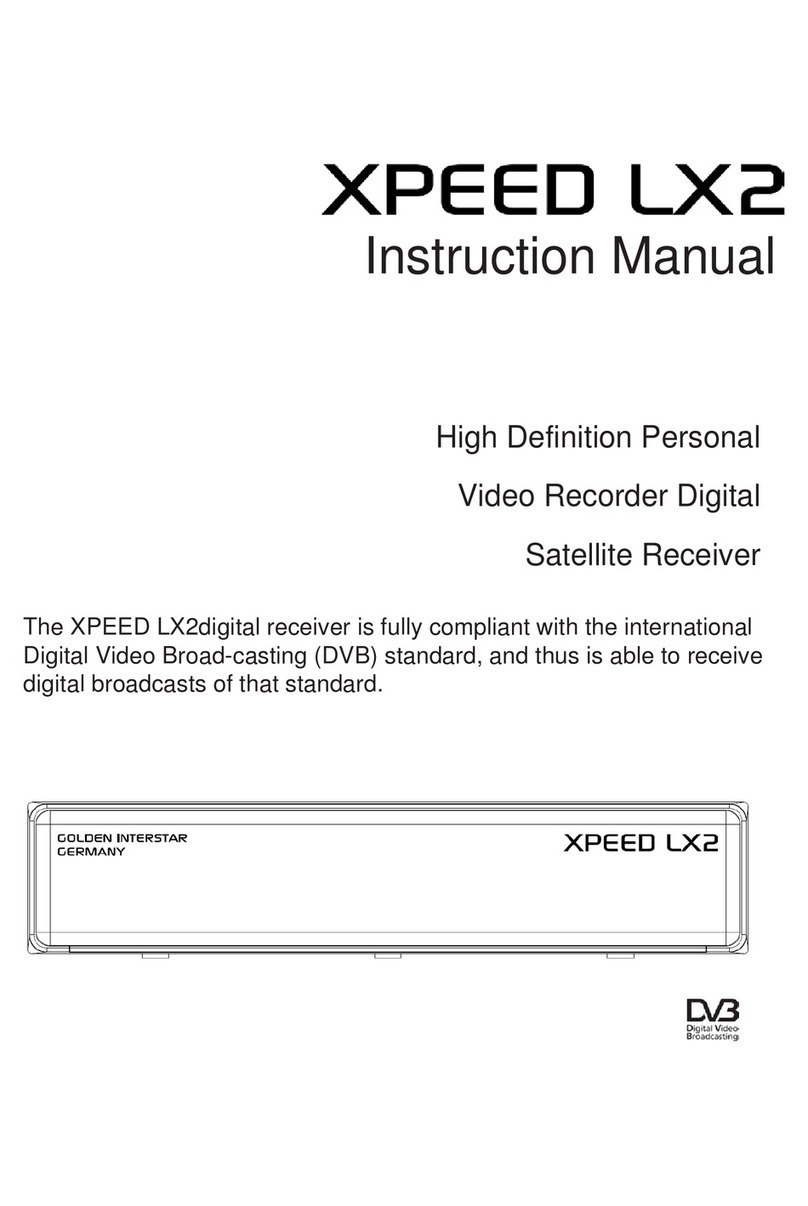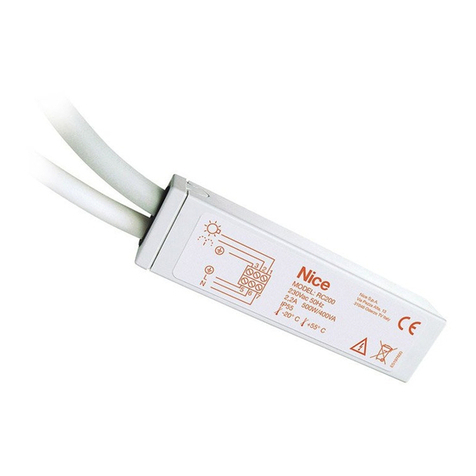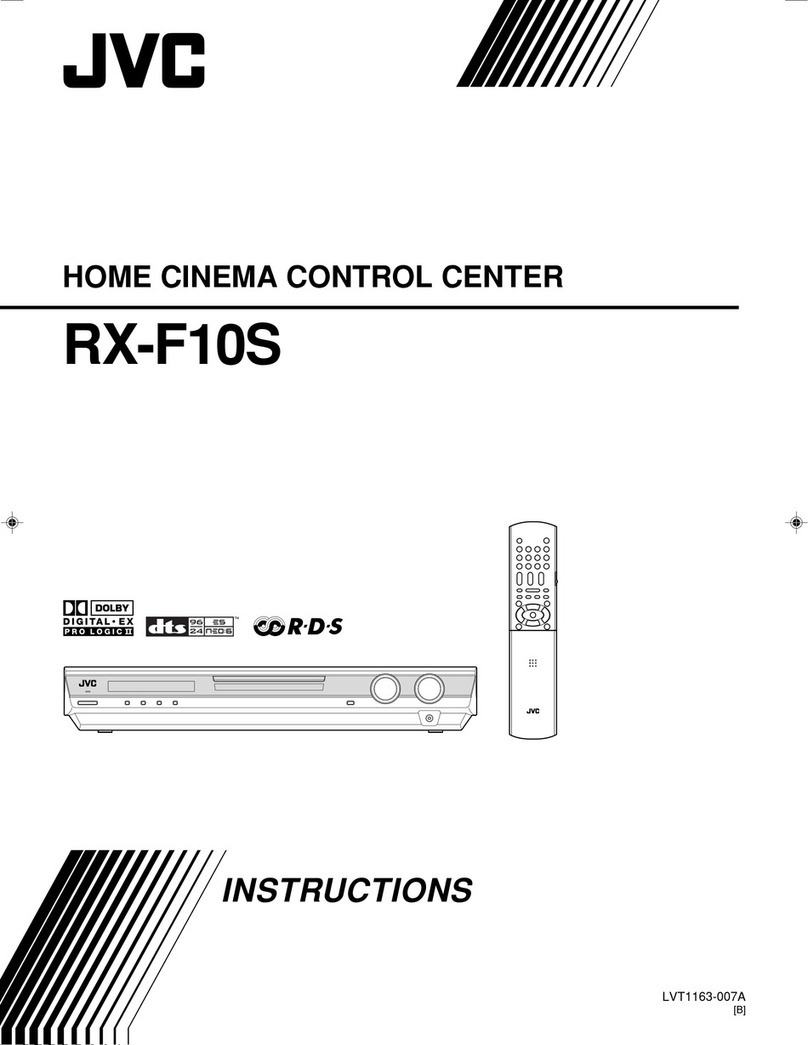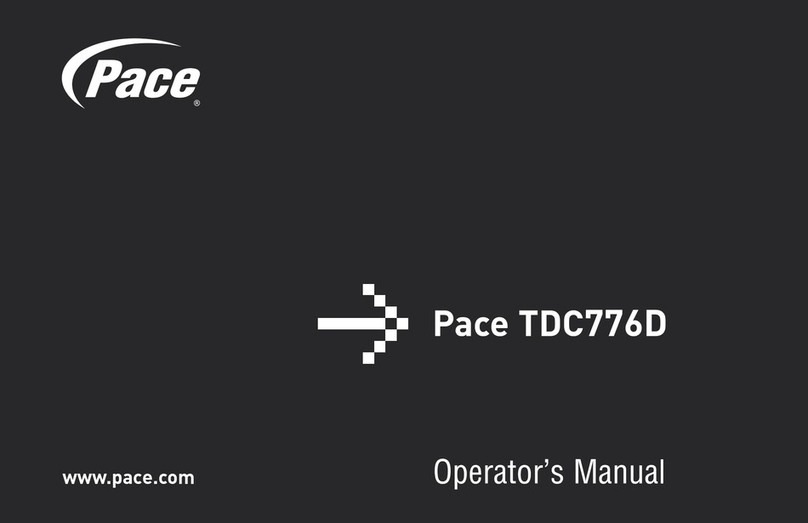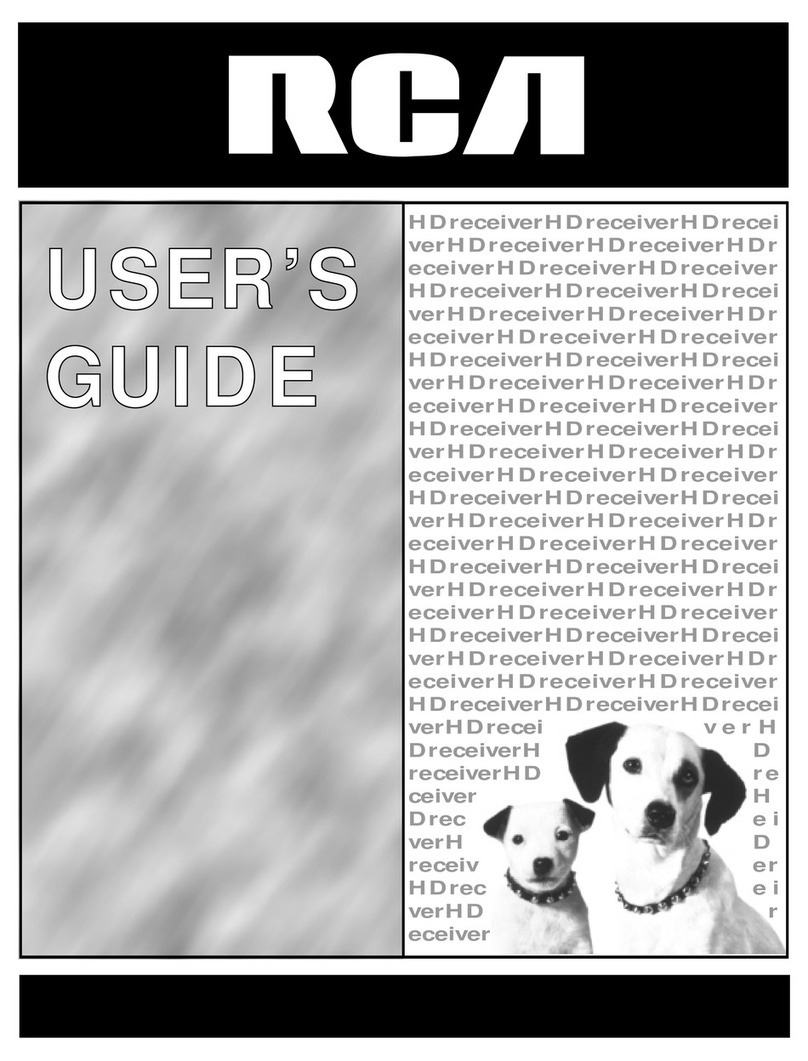Spectracom GSG-6 series Product information sheet


© 2012-15 Spectracom, Inc. All rights reserved.
The information in this document has been carefully reviewed and is believed
to be accurate and up-to-date. This User Guide is subject to change without
notice. For the most current version of this documentation, please see our
web site at spectracom.com.
Spectracom reserves the right to make changes to the product described in
this document at any time and without notice. Any software that may be
provided with the product described in this document is furnished under a
license agreement or nondisclosure agreement. The software may be used or
copied only in accordance with the terms of those agreements.
No part of this publication may be reproduced, stored in a retrieval system, or
transmitted in any form or any means electronic or mechanical, including
photocopying and recording for any purpose other than the purchaser's
personal use without the written permission of Spectracom, Inc.
Other products and companies referred to herein are trademarks or registered
trademarks of their respective companies or mark holders.
Spectracom Corp.
• 1565 Jefferson Road, Suite 460, Rochester, NY 14623 USA
• 3, Avenue du Canada, 91974 Les Ulis Cedex, France
• Room 208 , No. 3 Zhong Guan Village South Road, Hai Dian District, Beijing 100081, China
Questions or comments regarding this User Guide?
èE-mail: techpubs@spectracom.orolia.com
User Guide GSG-5/6 Series I

Five Year Limited Warranty
Spectracom, a business of the Orolia
Group, warrants each new standard
product to be free from defects in material,
and workmanship for five years after
shipment in most countries where these
products are sold, EXCEPT AS NOTED
BELOW (the “Warranty Period” and
"Country Variances").
Warranty Exceptions
This warranty shall not apply if the product
is used contrary to the instructions in its
manual or is otherwise subjected to
misuse, abnormal operations, accident,
lightning or transient surge, or repairs or
modifications not performed by
Spectracom authorized personnel.
Items with a variance to the Five Year
Warranty Period are as follows:
90 Days Warranty
TimeKeeper Software
One Year Limited Warranty
Timeview Analog Clock
Path Align-R Products
Bus-level Timing Boards
IRIG-B Distribution Amplifiers
Two Year Limited Warranty
Rubidium Oscillators
Epsilon Board EBO3
Epsilon Clock 1S, 2S/2T, 3S, 31M
Epsilon SSU
Power Adaptors
Digital and IP/POE Clocks
WiSync Wireless Clock Systems and
IPSync IP Clocks
Rapco 1804, 2804, 186x, 187x, 188x,
189x, 2016, 900 series
Three Year Limited Warranty
Pendulum Test & Measurement Products
GPS- 12R, CNT- 9x, 6688/6689, GPS-
88/89, DA-35/36, GPS/GNSS Simulators
Country Variances
All Spectracom products sold in India have
a one year warranty.
Warranty Exclusions
Batteries, fuses, or other material
contained in a product normally consumed
in operation.
Shipping and handling, labor & service
fees EXCEPT FOR THE LIMITED
WARRANTY STATED ABOVE,
SPECTRACOM DISCLAIMS ALL
WARRANTIES OF ANY KIND WITH
REGARD TO SPECTRACOM PRODUCTS
OR OTHER MATERIALS PROVIDED BY
SPECTRACOM, INCLUDING WITHOUT
LIMITATION ANY IMPLIED WARRANTY
OR MERCHANTABILITY OR FITNESS
FOR A PARTICULAR PURPOSE.
Spectracom shall have no liability or
responsibility to the original customer or
any other party with respect to any liability,
loss, or damage caused directly or
indirectly by an Spectracom product,
material, or software sold or provided by
Spectracom, replacement parts or units, or
services provided, including but not limited
to any interruption of service, excess
charges resulting from malfunctions of
II User Guide GSG-5/6 Series
SPECTRACOM LIMITED WARRANTY

hardware or software, loss of business
or anticipatory profits resulting from
the use or operation of the
Spectracom product or software,
whatsoever or howsoever caused. In
no event shall Spectracom be liable
for any direct, indirect, special or
consequential damages whether the
claims are grounded in contract, tort
(including negligence), or strict
liability.
Extended Warranty
Coverage
Extended warranties can be
purchased for additional periods
beyond the standard warranty.
Contact Spectracom no later than the
last year of the standard warranty for
extended coverage.
Warranty Claims
Spectracom’s obligation under this
warranty is limited to the cost of in-
factory repair or replacement, at
Spectracom’s option, of the defective
product or the product’s defective
component. Spectracom’s Warranty
does not cover any costs for
installation, reinstallation, removal or
shipping and handling costs of any
warranted product. If in Spectracom’s
sole judgment, the defect is not
covered by the Spectracom Limited
Warranty, unless notified to the
contrary in advance by customer,
Spectracom will make the repairs or
replace components and charge its
then current price, which the customer
agrees to pay.
In all cases, the customer is
responsible for all shipping and
handling expenses in returning
product to Spectracom for repair or
evaluation. Spectracom will pay for
standard return shipment via common
carrier. Expediting or special delivery
fees will be the responsibility of the
customer.
Warranty Procedure
Spectracom highly recommends that
prior to returning equipment for
service work, our technical support
department be contacted to provide
troubleshooting assistance while the
equipment is still installed. If
equipment is returned without first
contacting the support department and
“no problems are found” during the
repair work, an evaluation fee may be
charged.
Spectracom shall not have any
warranty obligations if the procedure
for warranty claims is not followed.
Customer must notify Spectracom of a
claim, with complete information
regarding the claimed defect. A Return
Authorization (RMA) Number issued
by Spectracom is required for all
returns.
Returned products must be returned
with a description of the claimed
defect, the RMA number, and the
name and contact information of the
individual to be contacted if additional
information is required by Spectracom.
Products being returned on an RMA
must be properly packaged with
transportation charges prepaid.
User Guide GSG-5/6 Series III

IV User Guide GSG-5/6 Series

CONTENTS
User Guide GSG-5/6 Series • TABLE OF CONTENTS V
SPECTRACOM LIMITED WARRANTY II
CHAPTER 1
Introduction 1
1.1 Quick Start Guide 2
1.2 Welcome 3
1.2.1 Key Features 3
1.2.2 Typical Applications 4
1.2.3 Intended Use and Operating Principle 4
1.2.4 Compliance & Legal Notices 5
1.2.4.1 About this Document 6
1.2.4.2 Declaration of Conformity 6
1.2.5 Technical Specifications 6
1.2.5.1 RF Output Specifications 6
1.2.5.2 Rear Outputs and Inputs 7
1.2.5.3 Time Base 8
1.2.5.4 Optional Antenna 8
1.2.5.5 Environmental 9
CHAPTER 2
Setup 11
2.1 About Your Safety 12
2.1.1 Safety Precautions 12
2.1.2 Basic User Responsibilities 12
2.1.3 If in Doubt about Safety 13
2.2 Unpacking and Inventory 13
2.2.1 Unit Identification 14
2.3 Mechanical Installation 14
2.3.1 General Installation Considerations 14
2.4 Electrical Installation 21
2.5 Signal Power Level Considerations 22
2.5.1 Compliance: Using an Antenna 22

2.5.2 Transmit Power Level 23
CHAPTER 3
Features & Functions 25
3.1 Front Panel 27
3.1.1 Description of Keys 28
3.1.1.1 Power 28
3.1.1.2 Start 28
3.1.1.3 Exit 28
3.1.1.4 Cancel 28
3.1.1.5 Menu 28
3.1.1.6 View 29
3.1.1.7 Enter 29
3.1.1.8 Arrows 29
3.1.1.9 N/S 29
3.1.1.10 E/W 29
3.1.1.11 Numeric Keys 29
3.1.1.12 +/– (format) 29
3.1.1.13 [.] (hold) 30
3.2 Rear Panel 30
3.3 The GSG Main Menu 31
3.4 "Start" Menu 32
3.4.1 Scenario Start Variations 33
3.4.2 Scenario Execution Views 33
3.4.2.1 View 1/x 34
3.4.2.2 View >1/x 34
3.4.2.3 Last View 37
3.5 "Select" Menu 37
3.5.1 Start Time 39
3.5.2 Duration 40
3.5.3 Latitude, Longitude, Altitude 41
3.5.4 Trajectory 41
3.5.4.1 Predefined Trajectories 42
3.5.4.2 Trajectory Files 43
3.5.4.3 Timestamp Usage in Trajectories 44
3.5.5 Ephemeris 45
3.5.5.1 Default Ephemeris 45
VI User Guide GSG-5/6 Series • TABLE OF CONTENTS

3.5.5.2 Download Ephemeris 46
3.5.5.3 User-Uploaded Ephemeris 46
3.5.6 Leap Second 49
3.5.7 Event Data 50
3.5.8 Antenna Settings 55
3.5.8.1 Antenna model 55
3.5.8.2 Lever arm 56
3.5.8.3 Elevation mask 56
3.5.9 Advanced Configuration Options 57
3.5.9.1 Multipath signals 57
3.5.9.2 Interference signals 59
3.5.9.3 Base station 62
3.5.9.4 Environment models 63
3.5.9.5 Atmospheric model 66
3.5.10 Satellite Configuration 68
3.5.10.1 Satellite Systems 69
3.5.10.2 Number of Satellites 69
3.5.10.3 Frequency Bands and Signal De-/Activation 70
3.5.10.4 Satellite Constellations 72
3.5.10.5 Encryption 74
3.5.10.6 SBAS Satellites 75
3.6 "Options" Menu 78
3.6.1 Transmit Power 78
3.6.1.1 External Attenuation 80
3.6.1.2 Noise Generation 81
3.6.2 Signal Generator 83
3.6.2.1 Signal type 84
3.6.2.2 Satellite ID 85
3.6.2.3 Transmit power 85
3.6.2.4 Frequency offset 86
3.6.2.5 Start time 86
3.6.2.6 Ephemeris 86
3.6.2.7 AutoStart 86
3.6.3 Interface and Reference 87
3.6.3.1 Network Configuration 88
3.6.3.2 Proxy Configuration 89
3.6.4 Manage Files 90
3.6.5 Show System Information 92
User Guide GSG-5/6 Series • TABLE OF CONTENTS VII

3.6.6 Restore Factory Defaults 92
3.6.7 Calibration 93
CHAPTER 4
Frequent Tasks 95
4.1 Working with Scenarios 96
4.1.1 Scenario Start/Stop/Hold/Arm 96
4.1.2 Running a Scenario 96
4.1.3 Holding a Scenario 97
4.1.4 Configuring a Scenario 97
4.2 Locking/Unlocking the Keyboard 100
4.3 Adjusting Transmit Power 101
4.4 Accessing the GSG Web UI 101
4.5 Using the CLI 103
4.6 Performing a Receiver Cold Start 103
4.7 Updating Firmware 104
4.8 Uploading Files using StudioView 104
4.8.1 StudioView Uploader 104
4.9 Leap Second Configuration 107
CHAPTER 5
Reference 109
5.1 The GSG Web UI 110
5.2 Messages 110
5.3 Timing Calibration 115
5.4 NMEA Logging 116
5.5 Execution Log 117
5.6 Saving RINEX Data 117
5.7 YUMA Almanac File 118
5.8 Default Settings 119
5.9 Pre-Installed Scenarios 119
5.10 Default Scenario Satellites 121
5.10.1 GLONASS Default Satellite Types 122
VIII User Guide GSG-5/6 Series • TABLE OF CONTENTS

5.11 Scenario File Format 123
5.12 GSG StudioView Software 135
5.13 GSG Series Model Variants and Options 136
5.13.1 Which GSG Model & Options Do I Have? 136
5.13.2 GSG Models & Variants 137
5.13.2.1 GSG-51 Series 137
5.13.2.2 GSG-5 Series 137
5.13.2.3 GSG-6 Series 138
5.13.3 List of Available Options 138
5.14 Problems? 139
5.14.1 Technical Support 139
5.14.1.1 Regional Contact 139
5.15 License Notices 140
CHAPTER 6
SCPI Guide 153
6.1 SCPI Guide: Introduction 158
6.2 Protocol 158
6.2.1 General Format of Commands 158
6.2.2 Protocol Errors 159
6.3 Command Reference 161
6.3.1 Common Commands 161
6.3.1.1 *CLS 161
6.3.1.2 *ESE 161
6.3.1.3 *ESR? 162
6.3.1.4 *IDN? 162
6.3.1.5 *OPC 163
6.3.1.6 *OPC? 164
6.3.1.7 *RST 165
6.3.1.8 *SRE 165
6.3.1.9 *SRE? 166
6.3.1.10 *STB? 166
6.3.1.11 *TST? 167
6.3.1.12 *WAI 167
6.3.2 SYSTem: Subsystem Commands 168
6.3.2.1 SYSTem:ERRor? 168
User Guide GSG-5/6 Series • TABLE OF CONTENTS IX

6.3.2.2 SYSTem:RESET:FACTory 169
6.3.3 SOURce: Subsystem Commands 169
6.3.3.1 SOURce:POWer 170
6.3.3.2 SOURce:POWer? 170
6.3.3.3 SOURce:EXTREF 171
6.3.3.4 SOURce:EXTREF? 171
6.3.3.5 SOURce:PPSOUTput 171
6.3.3.6 SOURce:PPSOUTput? 172
6.3.3.7 SOURce:EXTATT 172
6.3.3.8 SOURce:EXTATT? 173
6.3.3.9 SOURce:NOISE:CONTRol 173
6.3.3.10 SOURce:NOISE:CONTRol? 174
6.3.3.11 SOURce:NOISE:CNO 174
6.3.3.12 SOURce:NOISE:CNO? 175
6.3.3.13 SOURce:NOISE:BW 175
6.3.3.14 SOURce:NOISE:BW? 175
6.3.3.15 SOURce:NOISE:OFFSET 176
6.3.3.16 SOURce:NOISE:OFFSET? 176
6.3.3.17 SOURce:ONECHN:CONTrol 177
6.3.3.18 SOURce:ONECHN:CONTrol? 177
6.3.3.19 SOURce:ONECHN:SATid 178
6.3.3.20 SOURce:ONECHN:SATid? 179
6.3.3.21 SOURce:ONECHN:STARTtime 180
6.3.3.22 SOURce:ONECHN:STARTtime? 181
6.3.3.23 SOURce:ONECHN:EPHemeris 181
6.3.3.24 SOURce:ONECHN:EPHemeris? 181
6.3.3.25 SOURce:ONECHN:FREQuency 182
6.3.3.26 SOURce:ONECHN:FREQuency? 182
6.3.3.27 SOURce:ONECHN:SIGNALtype 183
6.3.3.28 SOURce:ONECHN:SIGNALtype? 183
6.3.3.29 SOURce:SCENario:LOAD 184
6.3.3.30 SOURce:SCENario:LOAD? 184
6.3.3.31 SOURce:SCENario:CONTrol 185
6.3.3.32 SOURce:SCENario:CONTrol? 185
6.3.3.33 SOURce:SCENario:PROPenv 186
6.3.3.34 SOURce:SCENario:PROPenv? 187
6.3.3.35 SOURce:SCENario:LOG? 187
6.3.3.36 SOURce:SCENario:OBServation 188
6.3.3.37 SOURce:SCENario:OBServation? 189
6.3.3.38 SOURce:SCENario:NAV 189
XUser Guide GSG-5/6 Series • TABLE OF CONTENTS

6.3.3.39 SOURce:SCENario:NAV? 190
6.3.3.40 SOURce:SCENario:SATid[n]? 190
6.3.3.41 SOURce:SCENario:SIGNALtype[n]? 191
6.3.3.42 SOURce:SCENario:SIGNALtype? 192
6.3.3.43 SOURce:SCENario:NAVBITS 192
6.3.3.44 SOURce:SCENario:FREQuency[n]? 195
6.3.3.45 SOURce:SCENario:FREQuency? 195
6.3.3.46 SOURce:SCENario:POWer[n] 196
6.3.3.47 SOURce:SCENario:POWer[n]? 196
6.3.3.48 SOURce:SCENario:POWer 197
6.3.3.49 SOURce:SCENario:POWer? 198
6.3.3.50 SOURce:SCENario:FREQBAND:POWer 199
6.3.3.51 SOURce:SCENario:SVmodel[n]? 199
6.3.3.52 SOURce:SCENario:SVmodel? 200
6.3.3.53 SOURce:SCENario:LIST? 201
6.3.3.54 SOURce:SCENario:ANTennamodel 201
6.3.3.55 SOURce:SCENario:ANTennamodel? 201
6.3.3.56 SOURce:SCENario:TROPOmodel 202
6.3.3.57 SOURce:SCENario:TROPOmodel? 202
6.3.3.58 SOURce:SCENario:IONOmodel 202
6.3.3.59 SOURce:SCENario:IONOmodel? 203
6.3.3.60 SOURce:SCENario:KEEPALTitude 203
6.3.3.61 SOURce:SCENario: KEEPALTitude? 204
6.3.3.62 SOURce:SCENario:POSition 204
6.3.3.63 SOURce:SCENario:POSition? 205
6.3.3.64 SOURce:SCENario:ECEFPOSition 205
6.3.3.65 SOURce:SCENario:ECEFPOSition? 206
6.3.3.66 SOURce:SCENario:DATEtime 207
6.3.3.67 SOURce:SCENario:DATEtime? 207
6.3.3.68 SOURce:SCENario:RTCM? 208
6.3.3.69 SOURce:SCENario:RTCMCFG? 208
6.3.3.70 SOURce:SCENario:RTCMCFG 209
6.3.3.71 SOURce:SCENario:DUPlicate 209
6.3.3.72 SOURce:SCENario:DUPlicate[n] 210
6.3.3.73 SOURce:SCENario:DUPlicate? 211
6.3.3.74 SOURce:SCENario:MULtipath[n] 212
6.3.3.75 SOURce:SCENario:MULtipath[n]? 213
6.3.3.76 SOURce:SCENario:DELete[n] 214
6.3.3.77 SOURce:SCENario:DELete 215
6.3.3.78 SOURce:SCENario:DELete[n] 215
User Guide GSG-5/6 Series • TABLE OF CONTENTS XI

6.3.3.79 SOURce:FILe:TYPe 216
6.3.3.80 SOURce:FILe:NAMe 216
6.3.3.81 SOURce:FILe:LENgth 217
6.3.3.82 SOURce:FILe:CHECKsum 217
6.3.3.83 SOURce:FILe:DATA 218
6.3.3.84 SOURce:KEYLOCK:PASSWord 219
6.3.3.85 SOURce:KEYLOCK:PASSWord? 219
6.3.3.86 SOURce:KEYLOCK:STATus 220
6.3.3.87 SOURce:KEYLOCK:STATus? 220
6.3.4 Mass Memory Subsystem Commands 220
6.3.4.1 MMEMory:CATalog? 221
6.3.4.2 MMEMory:CDIRectory 221
6.3.4.3 MMEMory:CDIRectory? 222
6.3.4.4 MMEMory:DATA? 222
6.3.4.5 MMEMory:DELete 223
6.3.4.6 MMEMory:COPY 223
6.3.4.7 MMEMory:MOVE 223
6.3.5 Network Subsystem Commands 224
6.3.5.1 NETwork:MACaddress? 224
6.3.6 STATus: Subsystem Commands 224
6.3.6.1 STATus:OPERation:CONDition? 224
6.3.6.2 STATus:OPERation:ENABle 225
6.3.6.3 STATus:OPERation[:event]? 226
6.3.6.4 STATus:QUEStionable:CONDition? 226
6.3.6.5 STATus:QUEStionable:ENABle 226
6.3.6.6 STATus:QUEStionable[:EVENt]? 227
6.3.6.7 STATus:PRESet 227
6.4 Sensors Command Reference 228
6.4.1 Supported Sensor Types 229
6.4.1.1 Accelerometer 229
6.4.1.2 Linear Accelerometer 229
6.4.1.3 Gravimeter 230
6.4.1.4 Gyroscope 230
6.4.1.5 Odometer 230
6.4.1.6 Odometer 3D 230
6.4.2 Sensor Commands 230
6.4.2.1 SOURce:SENSor:REGister 230
6.4.2.2 SOURce:SENSor:REGister? 231
6.4.2.3 SOURce:SENSor:UNREGister 231
XII User Guide GSG-5/6 Series • TABLE OF CONTENTS

6.4.2.4 SOURce:SENSor:DATa? 231
6.4.2.5 SOURce:SENSor:NORMalize SENSOR_TYPE 231
6.4.2.6 SOURce:SENSor:NORMalize? SENSOR_TYPE 232
6.4.2.7 SOURce:SENSor:MAXrange SENSOR_TYPE 232
6.4.2.8 SOURce:SENSor:MAXrange? SENSOR_TYPE 232
6.5 RSG Command Reference 232
6.5.1 Data Types 232
6.5.2 TIME Parameter 233
6.5.3 RSG Commands 234
6.5.3.1 SOURce:SCENario:POSition TIME 234
6.5.3.2 SOURce:SCENario:POSition? 234
6.5.3.3 SOURce:SCENario:ECEFPOSition TIME 235
6.5.3.4 SOURce:SCENario:ECEFPOSition? 236
6.5.3.5 SOURce:SCENario:SPEed TIME 236
6.5.3.6 SOURce:SCENario:SPEed? 237
6.5.3.7 SOURce:SCENario:HEADing TIME 237
6.5.3.8 SOURce:SCENario:HEADing? 237
6.5.3.9 SOURce:SCENario:RATEHEading TIME 238
6.5.3.10 SOURce:SCENario:RATEHEading? 238
6.5.3.11 SOURce:SCENario:TURNRATE TIME 239
6.5.3.12 SOURce:SCENario:TURNRATE? 239
6.5.3.13 SOURce:SCENario:TURNRADIUS TIME 239
6.5.3.14 SOURce:SCENario:TURNRADIUS? 240
6.5.3.15 SOURce:SCENario:VELocity TIME 240
6.5.3.16 SOURce:SCENario:VELocity? 241
6.5.3.17 SOURce:SCENario:VSPEed TIME 241
6.5.3.18 SOURce:SCENario:VSPEed? 242
6.5.3.19 SOURce:SCENario:ENUVELocity TIME 242
6.5.3.20 SOURce:SCENario:ENUVELocity? 243
6.5.3.21 SOURce:SCENario:ECEFVELocity 243
6.5.3.22 SOURce:SCENario:ECEFVELocity? 244
6.5.3.23 SOURce:SCENario:ACCeleration TIME 244
6.5.3.24 SOURce:SCENario:ACCeleration? 244
6.5.3.25 SOURce:SCENario:VACCel TIME 245
6.5.3.26 SOURce:SCENario:VACCel? 245
6.5.3.27 SOURce:SCENario:ENUACCel TIME 246
6.5.3.28 SOURce:SCENario:ENUACCel? 246
6.5.3.29 SOURce:SCENario:ECEFACCel TIME 247
6.5.3.30 SOURce:SCENario:ECEFACCel? 247
User Guide GSG-5/6 Series • TABLE OF CONTENTS XIII

6.5.3.31 SOURce:SCENario:PRYattitude TIME 247
6.5.3.32 SOURce:SCENario:PRYattitude? 248
6.5.3.33 SOURce:SCENario:DPRYattitude TIME 248
6.5.3.34 SOURce:SCENario:DPRYattitude? 249
6.5.3.35 SOURce:SCENario:PRYRate TIME 249
6.5.3.36 SOURce:SCENario:PRYRate? 250
6.5.3.37 SOURce:SCENario:DPRYRate TIME 250
6.5.3.38 SOURce:SCENario:DPRYRate? 251
6.5.3.39 SOURce:SCENario:KEPLER TIME 251
6.5.3.40 SOURce:SCENario:KEPLER? 252
6.5.3.41 SOURce:SCENario:RUNtime? 252
6.5.3.42 SOURce:SCENario:DATEtime? 253
6.5.3.43 SOURce:SCENario:ELAPsedtime? 253
6.5.3.44 SOURce:SCENario:RSGUNDERflow 254
6.5.3.45 SOURce:SCENario:RSGUNDERflow? 255
6.5.3.46 SOURce:SCENario:DOPPler? 255
6.5.3.47 SOURce:SCENario:PRANge? 256
6.5.3.48 SOURce:SCENario:CHINview? 257
6.5.3.49 SOURce:SCENario:SVINview? 258
6.5.3.50 SOURce:SCENario:SVPos[n]? 258
6.5.3.51 SOURce:SCENario:SVPos[n]? 259
6.6 RSG Programming 260
6.6.1 Usage Recommendations 260
6.6.1.1 Communication Interface 260
6.6.1.2 Synchronization 260
6.6.1.3 Underflow and Overflow 261
6.6.1.4 Best Practices 261
6.6.1.5 Limitations 261
6.6.2 Trajectory FILE Format 261
6.7 Revision History, SCPI Guide 262
APPENDIX
Appendix i
7.1 Lists of Tables and Images ii
7.2 GSG User Manual Revision History iii
INDEX
XIV User Guide GSG-5/6 Series • TABLE OF CONTENTS

CHAPTER 1•User Guide GSG-5/6 Series 1
CHAPTER 1
Introduction
This first Chapter not only provides an overview of GNSS simulation
and the Spectracom GSG Series Simulators, but also information
relevant to your personal safety, as well as technical specifications.
The following topics are included in this Chapter:
1.1 Quick Start Guide 2
1.2 Welcome 3
1.2.1 Key Features 3
1.2.2 Typical Applications 4
1.2.3 Intended Use and Operating Principle 4
1.2.4 Compliance & Legal Notices 5
1.2.4.1 About this Document 6
1.2.4.2 Declaration of Conformity 6
1.2.5 Technical Specifications 6
1.2.5.1 RF Output Specifications 6
1.2.5.2 Rear Outputs and Inputs 7
1.2.5.3 Time Base 8
1.2.5.4 Optional Antenna 8
1.2.5.5 Environmental 9

1.1 Quick Start Guide
The following procedure is a brief outline on how to get started with your GSG-5/6 unit.
The minimal setup steps are:
1. Unpack the unit (see "Unpacking and Inventory" on page 13), and place it on a desktop or
install it in a rack, as described under "Mechanical Installation" on page 14.
2. Connect the receiver antenna cable to the RF Out connector on the front panel. (See also
"Electrical Installation" on page 21.)
3. Connect the power cable to a wall socket. Press the ON/OFF key to start the unit.
4. The GSG display will show the Start view: Verify that the right-hand side shows an
overview of a test scenario (name, date, lat/long/traj, etc.).
5. If no scenario is shown, use the arrow and enter keys to select Select from the main menu.
This will open up a list of pre-defined scenarios. Select one of the scenarios from this list.
6. Press the start key to begin with the scenario execution.
7. Start the GNSS receiver you want to test.
Note: It may be necessary to clear the memory of your GNSS receiver, i.e.
erase old data. This is typically referred to as a Cold Start , where any
ephemeris data and almanac data are removed from the receiver’s memory.
8. Your GNSS receiver under test should see and track the generated signals. If the receiver
could successfully decode the navigation data included in the signals (this process often
takes approximately 40 seconds), the receiver will output the navigation fix as specified in
the selected scenario. This navigation solution should correspond to the solution shown on
the GSG-5/6 display.
2CHAPTER 1•User Guide GSG-5/6 Series Rev.22
1.1 Quick Start Guide

1.2 Welcome
The GSG-5™ and GSG-6™ Series of GNSS Constellation Simulators provide a wide-range of
capabilities for in-line production testing and development testing, including navigational fix and
position testing, while offering ease-of-operation.
GSG-51 is a single-channel GPS L1 RF generator, capable of emulating a single GNSS signal.
One of the main applications for these cost-effective units is fast manufacturing testing of GPS
receivers.
GSG- 5Series simulators reproduce the environment of a GNSS receiver. Depending on the
configuration, these units simulate up to sixteen GNSS satellites, up to 3SBAS satellites,
together with optional multipath and interference signals. The GSG-5 Series applies models to
simulate satellite motions, atmospheric effects, and different antenna types. The movement of the
GNSS receiver under test is defined using NMEA data or pre-defined trajectory models.
GSG-6Series simulators add advanced features and the capability to simulate up to 64 satellites
(configuration-dependent) on different frequency bands simulatenously. New signal types include
GPS L2P, L2C and L5, GLONASS L2, Galileo E1 and E5a/b, BeiDou B1 and B2, and QZSS L1
C/A, L2C, L5 and L1 SAIF, IRNSS L5.
1.2.1 Key Features
Since GNSS testing requirements may vary considerably from application to application,
GSGSeries simulators are available in a multitude of configurations (see "GSG Series Model
Variants and Options" on page 136).
Some of the key features are:
1.2 Welcome
CHAPTER 1•User Guide GSG-5/6 Series Rev.22 3

Up to 64 independent satellite channels can be simulated.
Supported signal types:
GPS L1, L2, C/A and P-Code; L2C and L5
GLONASS L1, L2, C/A and P-Code
Galileo E1/E2 and E5
BeiDou compatible
Support of different types of SBAS simulation: EGNOS, WAAS, MSAS, GAGAN
Generation of white noise, multipath and interference signals
Receiver sensitivity testing with accurate, variable output levels ranging from –65 to –160
dBm
High accuracy time base
GSG Series simulators offer a front panel display with an intuitive software User Interface, allow
for remote Web-based operation, and include GSG StudioView™, a PC-based software with
Google Maps™ interface to create custom scenarios.
1.2.2 Typical Applications
Basic Receiver Testing
Time-to-First-Fix (TTFF): How fast the GNSS receiver can get a position fix after a cold
start
Reacquisition Time: How fast the GNSS receiver can get a fix after a hot or warm start
Location: Test different locations in the world, position accuracy
Sensitivity: Acquisition and Tracking Sensitivity
Noise Susceptibility: SNR limit testing
Advanced Receiver Testing
Trajectories: Test receiver while moving
1PPS: Verify the receiver timing accuracy
Leap Second: Test the leap second handling of the receiver
Multipath: Perform basic receiver tests under multipath conditions
1.2.3 Intended Use and Operating Principle
Spectracom GSG-Series Signal Generators and GNSS Simulators are used to test GNSS
receivers by generating GNSS signals, as they are transmitted by GNSS satellites. The signals
are transmitted via air (using an antenna; see "Signal Power Level Considerations" on page 22), or
via an RF cable.
4CHAPTER 1•User Guide GSG-5/6 Series Rev.22
1.2 Welcome
This manual suits for next models
1
Table of contents
Popular Receiver manuals by other brands
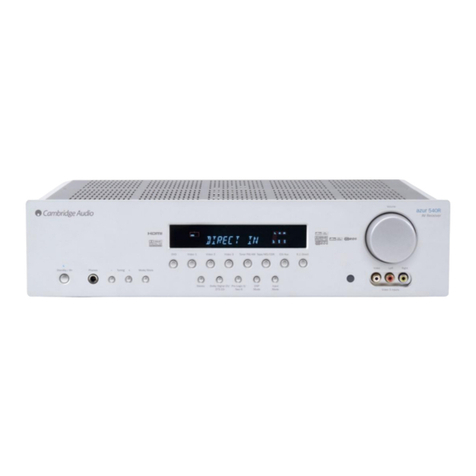
Cambridge Audio
Cambridge Audio Azur 540R V3 Technical specifications
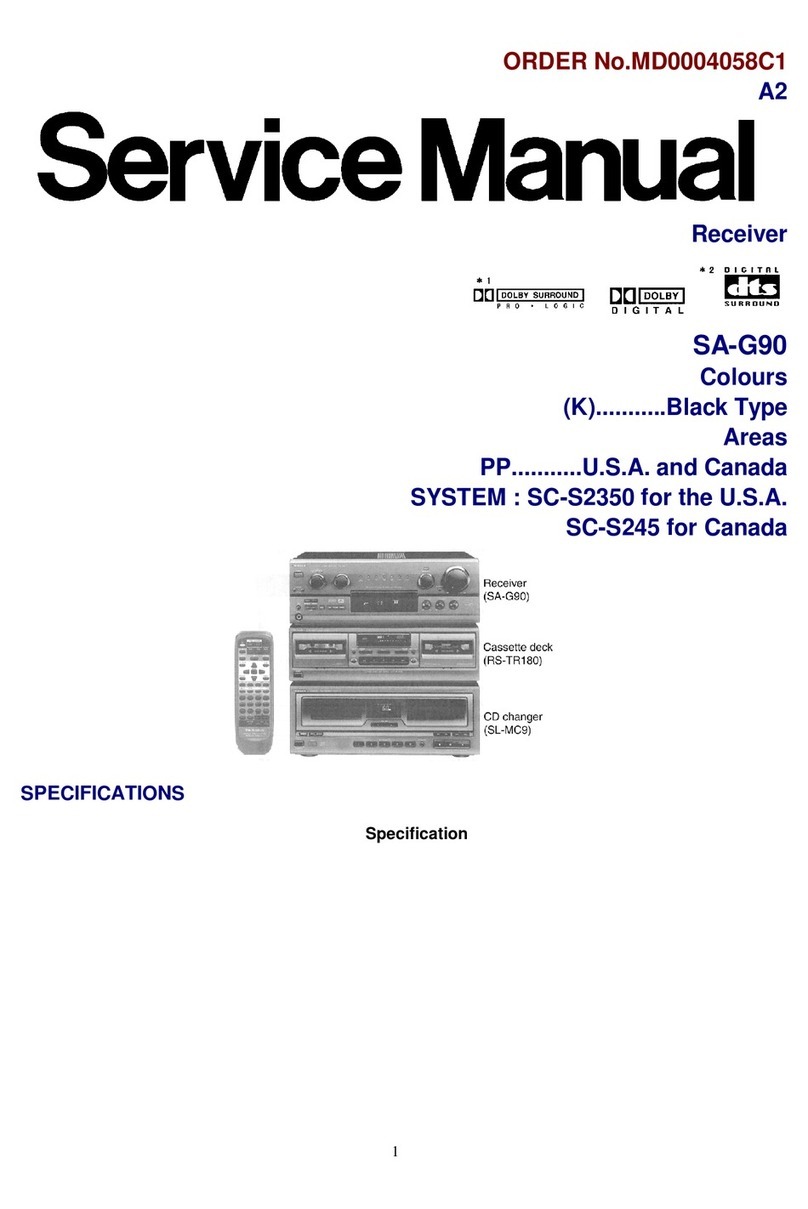
Panasonic
Panasonic SA-G90 Service manual

Tecsun
Tecsun S-2000 owner's manual
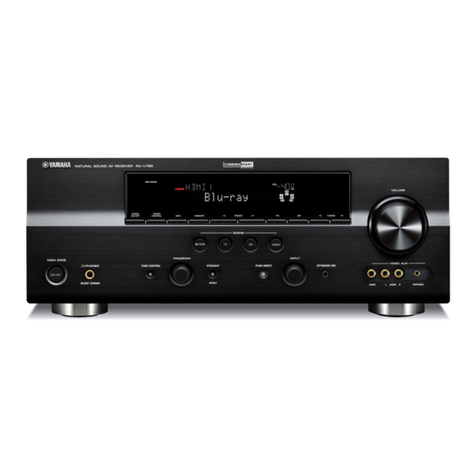
Yamaha
Yamaha RXV765 - RX AV Receiver owner's manual
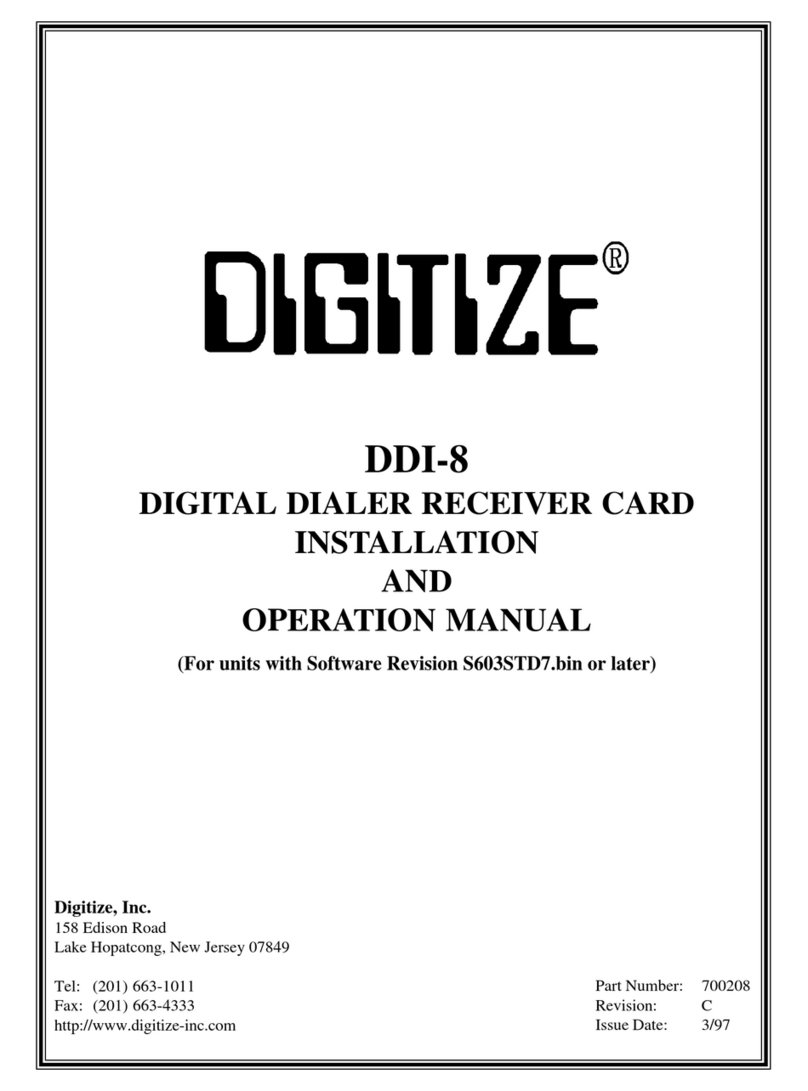
DIGITIZE
DIGITIZE DDI-8 Installation and operation manual
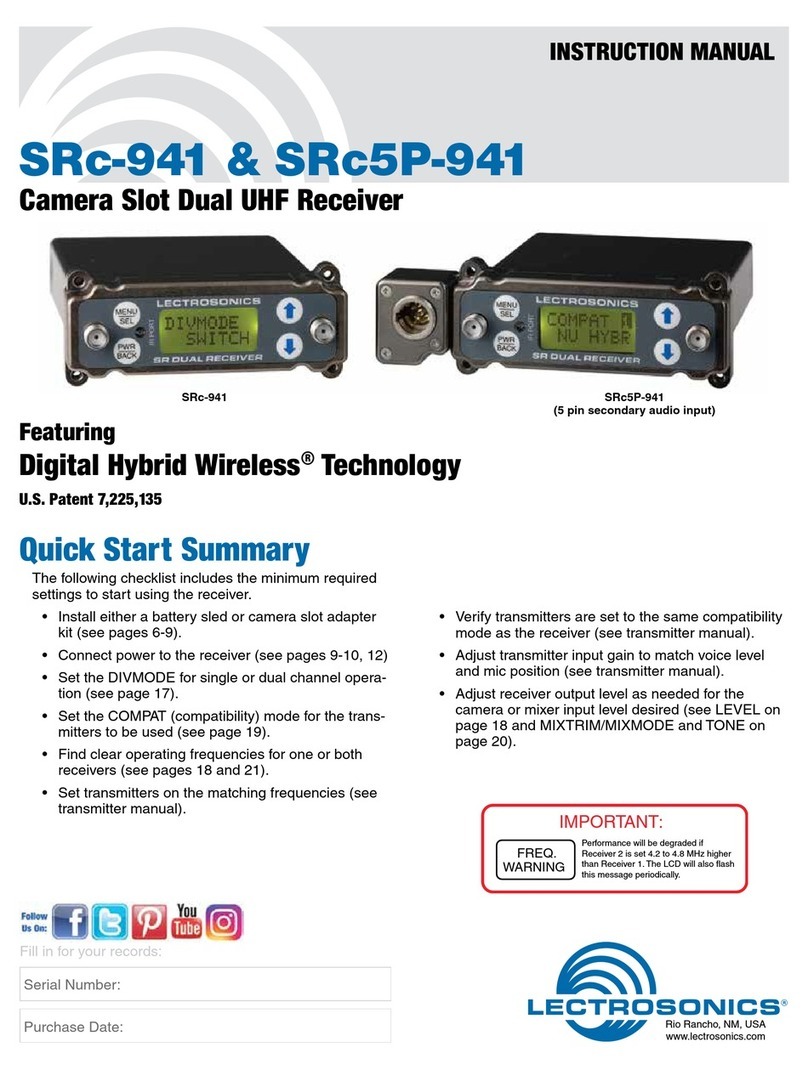
Lectrosonics
Lectrosonics SRc5P-941 instruction manual


